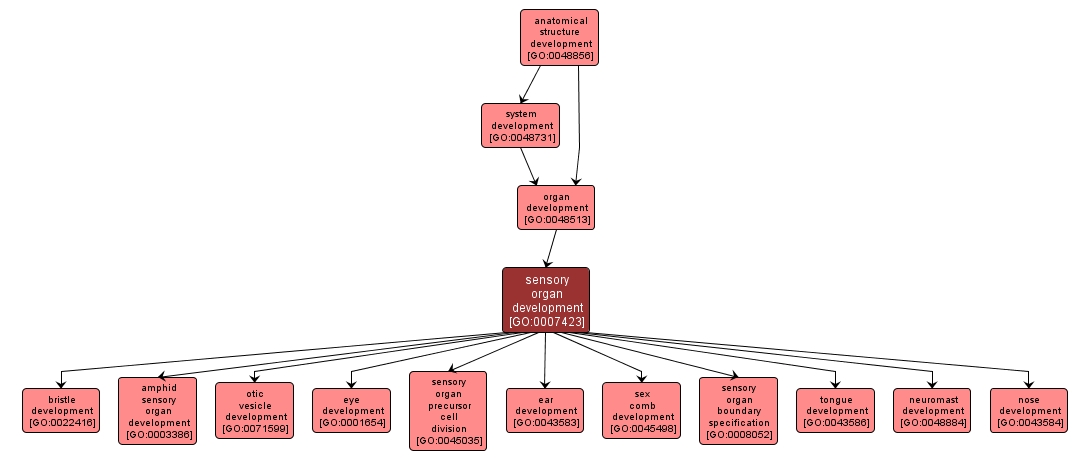GO TERM SUMMARY
|
| Name: |
sensory organ development |
| Acc: |
GO:0007423 |
| Aspect: |
Biological Process |
| Desc: |
The process whose specific outcome is the progression of sensory organs over time, from its formation to the mature structure. |
| Synonyms:
|
|

|
INTERACTIVE GO GRAPH
|














